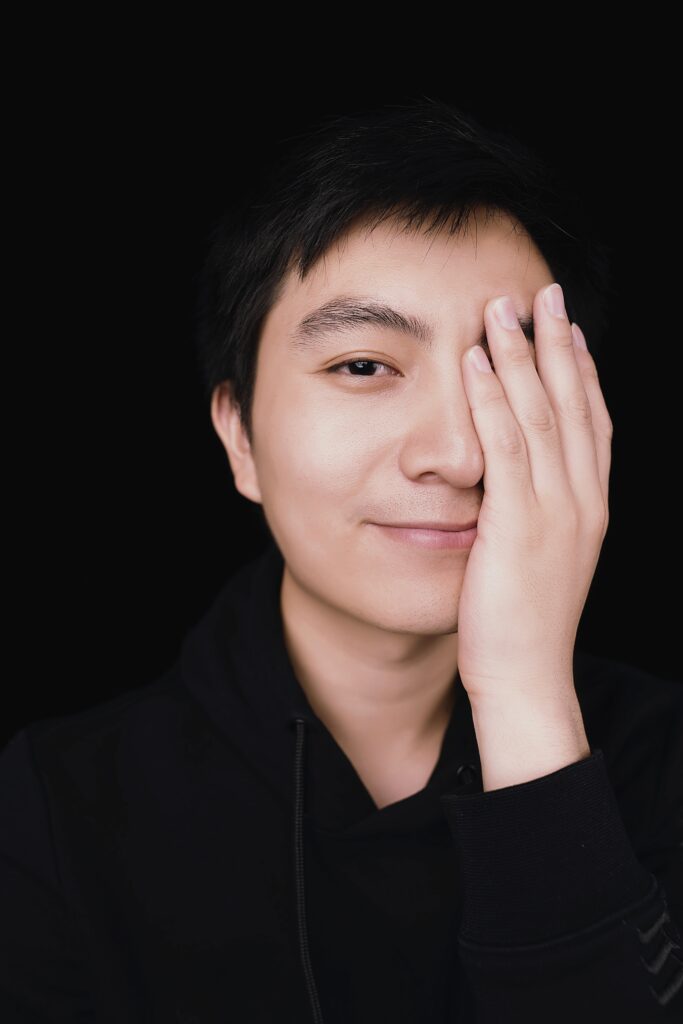A favorite question I like to ask: “What does desire feel like for you?”
Most often, it’s followed with a blank look, confusion, terror, and/or clarifying questions. Which makes sense; how often do we think about what a certain feeling, well, feels like?
So sometimes, it’s easier to ask, “OK, so how do you know when you are feeling hungry?”
This one feels more accessible: my stomach growls, it feels empty, I can’t stop thinking about food, imagining its taste, I may find myself opening the fridge and peering inside, my stomach might hurt.
We’ve just turned a feeling into a physiological and sensory experience — I hear things, I feel things, I almost taste things. There are thoughts involved — envisioning food, planning on how to get a meal, wondering what it is I’d like to have. I might practice communication around this — planning a restaurant, or a shared menu, or discussing the specifics of when, where, how. And, there are emotions involved with this process — desire, wanting, impatience, maybe even me being plan ol’ hangry.
That is to say, there are a multitude of options to describe my experience as a person living in a body that requires sustenance. Similarly, many bodies also demand and desire fulfilling sexual and intimate experiences. Whereas hunger is a universal need, and culture is built upon the cornerstone of sharing meals, I would argue so is sexuality. However, it so happens that the latter has been forced into taboo territory in our culture, and as such we have lost a lot of ability to understand it and discuss it, both singly and with others. Therefore, it is part of our work to reconstruct this internal knowing, and brave the trials and tribulations in understanding better how to communicate this with others, and within ourselves.
Knowing this, when the question of what desire is like is again broached, I notice folks breaking shyly, reservedly into this space of accessing this experience.
Maybe desire feels like a warmth curling around in one’s abdomen, or a deep throbbing. Maybe it feels like a thought process of fantasizing or planning. Maybe it feels like a feeling of love, wanting, seeking. Maybe it’s intensely stressful, embodying dread and fear. Maybe something else entirely. Whatever the case, as you continue to access this self-knowledge, you come closer to better understanding and accepting yourself.
In “Why We Love,” author Dr. Helen Fisher discusses the biological underpinnings of romantic love and sexual lust, arguing that desire in humans is largely fueled by the chemical dopamine, a neurotransmitter hormone. Dopamine’s function isn’t just limited to sexuality; it plays a major role in goal-oriented behaviors, learning, motivation, mood, interest, attention, and pleasure. Dopamine plays a central role in your body’s experience of “wanting,” and is released in a pleasurable wave when one attains a goal, thereby helping to motivate goal-directed behavior. Researchers have found associations between novelty and higher dopamine levels, informing an experience called “New Relationship Energy,” a phenomenon largely discussed in the consensual nonmonogamy community.
In essence, when one becomes involved with a new partner, one might experience an overload in goal-directed desire, activity, and behavior. Think about meeting someone new you feel romantic interest for: it feels like a drug, staying up all night talking, wanting to see them again soon, thinking about them constantly, wanting and desiring their company. Dopamine is the chemical responsible for this wanting, and this does happen to closely resemble what someone facing an addiction feels, chemically, anyway.
As relationships continue and the novelty wears off, and the period we might refer to as “the honeymoon period” ends, dopamine levels naturally decrease; the brain settles in. Along this process, chemicals in addition to dopamine, like oxytocin, vasopressin, serotonin, testosterone, and norepinephrine, among others, play a role in bonding, romantic love, and sexuality, which I won’t go into here, because we’re talking about desire today.
Science is still working on understanding our process of feeling desire. We’ve established we do understand some of the biological underpinnings of it, but not all. For example, we understand testosterone plays a role in desire, sex, and lust — anyone who’s taken a course of T in hormone replacement therapy would likely be able to discuss related symptoms. Testosterone is usually higher in folks assigned male at birth (AMAB) and lower in folks assigned female at birth (AFAB) — however, plenty of men may feel low sexual desire and plenty of women may feel high sexual desire and an asexual person taking testosterone may notice absolutely no difference in their experience of desire — or vice versa. Desire is mutable, and not dependent just on hormones our body produces or takes. Likewise, the medication viagra (sildenafil citrate) may cause arousal and erection in folks with penises — but has been found to do little to nothing for folks without. Scientists are still trying to figure this out, as desire is not clearly understood, especially in AFAB populations.
In the course of my work, I meet with many folks, mainly cis women, who experience “low sexual desire.” I’m putting this in quotes here because who the hell are we comparing them to to get the “low” judgement? There’s no concrete judgement of what’s “normal” in sex, remember that. There are only societal “shoulds,” pressure to conform to some exaggerated norm purported by sources like friends, family, social media, popular media, biased medical science, etc. I’ve met plenty of folks across the board who identify as asexual (a spectrum largely categorized by little to no sexual desire) who are just fine with not wanting sex, and that’s fine. There’s nothing pathological about having no or low desire for sex.
Here, I will discuss “low sexual desire” in a context that it causes distress, such as when one wishes to desire sex more, for example perhaps because a partner desires sex more often that they do and this discrepancy causes stress in the relationship. When such a case occurs, the blame often falls on “low sex drive” as the culprit that may need to be “fixed.”
Understandably so; this is a script that exists in our society, one often gendered (though interestingly, and anecdotally, I will say this gender breakdown has not yet existed so starkly in my work in the community). I’m sure we can say the script together, we both live in this culture: “Ugh, my partner doesn’t want to fuck me.”
I’m here to say, this does not encompass the entire spectrum of the experience. There’s more to desire than oxytocin, than testosterone, than thinking about sex, than masturbating, than wanting to fuck your partner, than acting on desires, than having a sexual experience together. If we just did A -> B -> C, we lose out on so many mediating and moderating factors to take into account in the experience.
For example, Reagan wants their partner Stella to fuck them, and it ain’t happening. Reagan protests, “Ugh, my partner doesn’t want to fuck me!” It’s so simple to jump to “Stella has low sexual desire, low libido, low sex drive, etc.” I get why it’s alluring. I get why it’s even simpler to make this assertion if there’s been a longstanding pattern of initiation and rejection. And maybe that definition fits. But maybe it doesn’t. And we can’t solve the problem, the discrepancy in desires, if we don’t understand it in an encompassing fashion.
Maybe sex hurts for Stella and it’s a hard sell. Maybe this is happening and is so distressing the couple hasn’t discussed it. Maybe the sexual initiation is not happening in a way that’s appetizing to both parties. Maybe the sex is not enjoyable for another reason. Maybe there’s an issue of timing, that initiation happens after one partner is already sleeping or wanting to be asleep. Maybe there’s stress associated with sex and it’s hard to desire it. Maybe there is underlying conflict or abuse occurring in the relationship. Maybe there are cultural values and norms disallowing freer sex to be had.
This is just a taste of factors that could be going on. And often there’s a multitude of factors present that can affect and change one’s desires from moment to moment, or relationship to relationship. It’s not so easy to say, “Maybe your husband has low T and that’s why he won’t fuck you.” Sure, get the blood test, get some more data. But it’s almost never so straightforward. At least, not in my world. Again, I’m a therapist dealing in sexuality, I’m biased, my sample size is biased. But I do believe that across the board, understanding individual and environmental factors are best for developing a better sex life.

Dr. Emily Nagoski in “Come As You Are” stresses the importance of a dual model of sexual desire comprised of excitation and inhibition, a sexual “gas pedal and brake” that affects one’s subjective experience of sexual desire. She suggests that sexual desire and surrounding feelings are affected by context including one’s environment, present situation, beliefs and values around sexuality, and mental and emotional reactions to sex, among other things. This means that one’s experience of sexual desire is influenced by present environment for better (Wow that person is really hot, I’m getting wet, We are in the bedroom, I saw they’re wearing lingerie!) or for worse (Oh my God we are at my parents’ house, It’s late and I want to go to sleep, Not during a work meeting!), as well as by mental experiences (I’m terrified of getting pregnant, I don’t want to disappoint my partner again, What if I can’t have an erection or orgasm, We haven’t had sex since…!). She speaks of the second, mental “brake” as a chronic, low-level inhibition or “No thank you” to sex, the implications of which can be dire.
The solution? “Turning on the ons and off the offs.” Dr. Nagoski suggests creating more positive contexts around sexuality, and limiting negative contexts. This involves taking a history, and deconstructing sexual experiences, knowledge, values, and beliefs to better understand one’s own experiences of sexual excitation and inhibition, and then putting those concepts and understanding into action.
Another method to combat discrepancy in sexual desire is by addressing the sources of stress around sexuality, as aforementioned but also through practicing Mindfulness Based Stress Reduction (MBSR) techniques designed to reduce physiological arousal related to stress. One such technique for this is Sensate Focus, where folks refocus on physical and sensual stimuli rather than goal-oriented scripts around sexuality involving performance and anxiety. Sensate focus was originally described by sex researchers Masters and Johnson, and recently expanded upon by clinicians for modern-day sex therapy work, which you may read about more here.
Centuries of research also exist around the importance of MBSR and recently, its applications to the field of sexuality. Diaphragmatic, deep breathing and progressive muscle relaxation are known to reduce negative feelings such as anxiety, fear, and stress, which inhibit one’s ability to feel desire. MBSR techniques can also affects one’s emotions and thoughts, alongside cognitive challenging, a baseline of Cognitive Behavioral Therapy (CBT) wherein one challenges their own limiting beliefs. These techniques when combined with bodily awareness and acceptance can help to reduce inhibitions to sex and remove the foot from th brake pedal, so to speak.
Another important factor in sexual desire is attention. Think of the stereotypical partner lying back and thinking “Is it over yet?” This person is out of the moment, unfocused. They may be worrying about sex, or wondering if they accidentally left the oven on. Whatever the case, this person is not in their feelings of desire. Dopamine, the chemical we mentioned earlier, also plays a role in attention, biochemically linking its experience with desire: that which we desire, we also preferentially attend to, and vice versa. By focusing in on an experience and devoting attention to it, such as by practicing mindfulness, this may also experience one’s experiences of desire positively. Turning one’s attentional ability to be under their conscious control is effort, certainly, mainly in the beginning — like any other muscle, the more one practices tenets of mindfulness, the more easily accessible they become, and desire can be much the same in this way.
For more information on how sexual experiences, desire, and mindfulness are linked, check out Dr. Lori Brotto’s book, “Better Sex Through Mindfulness.”

Something not well-known is the phenomenon of Responsive Sexual Desire, in contrast to the stereotypical or “normal” model of sexual desire, Spontaneous Desire. It’s likely that most folks think of desire as a given, like a lightening bolt just hitting you out of the blue — crack! — and suddenly you’re like, “Yeah, I could go for some of that sex.” Like hunger, many folks can experience the desire for sex spontaneously, out of nowhere, on its own, or after a period of time without. For others, it’s not so simple. It’s believed, based on numbers cited by Dr. Nagoski, that 75% of men and 15% of women may experience spontaneous desire. This discrepancy can cause issues in any-gender relationships, if one partner is experiencing desire spontaneously, and the other, well, not.
Responsive or reactive sexual desire describes one’s ability to feel sexual desire in response to sexual stimuli — for example, if a partner offers a sensual massage, a hot makeout sesh, or even sex, the other partner may then feel desire growing from that experience, although it would not have occurred without the initial stimulation. When folks with reactive sexual desire are in relationships with others, at times the solution seems a little convoluted — that sexual or sensual activity must begin absent of any desire, and that the positive feelings may grow from there. Of course this can be controversial — to tell someone, “You just need to have sex with your husband even if you don’t want to, and you’ll find that maybe you’ll get into it” can lead to hot water, certainly.
Moreover, Dr. Nagoski suggests that desire is contextual — that is, by creating positive contexts, one’s feelings of sexual desire might be more easily accessible. So rather than full-blown sexual initiation, by moderating the circumstances and environment around sexuality, desire may become more evident. This might mean having sex NOT at the end of a long and arduous day, or after a huge meal, or when there’s a whining pet in bed with you.
All this to say, understanding your own experiences of desire is hugely important. Knowing what desire feels like to you, when you feel it, what affects it, what excites it, what inhibits it — this self knowledge and the ability to communicate this with yourself and partners in a sex-positive and non-punishing context is a large component of building and maintaining healthy and satisfying sexual relationships.

